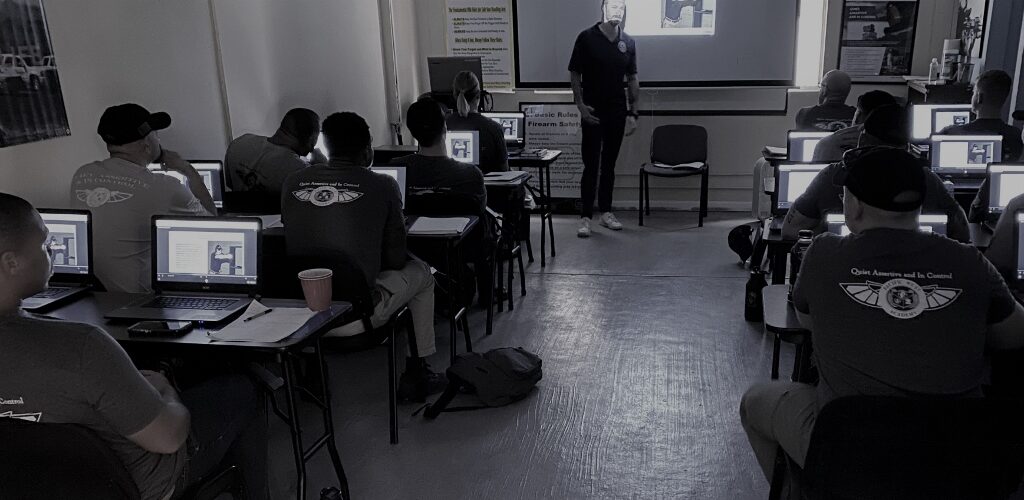

What are examples of executive protection?
What are examples of executive protection?
Roles and responsibilities in the executive protection industry
Executive protection (EP) or close-protection are specialized security services designed to ensure the safety and security of individuals who may be at risk due to their high-profile status, occupation, or other factors. This comprehensive security detail includes a range of tactics, personnel, and measures aimed at mitigating potential threats and safeguarding the well-being of the person under protection.
Many EP agents come from armed forces or professional athletic backgrounds. Beyond that, agents go through training and certification programs to stay up to date on licenses, technology, and physical fitness within their industry.
Here are some overarching examples of executive protection work. Many agents will study all of these facets but eventually hold emphasis in one or a few roles within an executive protection team.
Threat Assessment:
Before deploying an executive protection team, a thorough threat assessment is conducted. This assessment involves evaluating potential direct and indirect threats that the individual may face. Examples of threats can vary widely, from personal threats like stalking or harassment to geopolitical risks in the case of high-ranking government officials or business leaders.
For instance, a CEO of a multinational corporation planning a visit to a country known for political instability might receive a threat assessment that includes information about local extremist groups and the propensity to kidnap or kill. Furthermore, certain language and clothing could make a client more susceptible to scrutiny and danger if not informed ahead of time.
Threat assessments will include learning and respecting local customs and cultures to avoid misunderstandings and potential security risks. These executive protection professionals focus on mitigating the potential of misunderstanding and educating the client if necessary.
Close Protection Officers / Bodyguards:
Close Protection Officers, commonly known as bodyguards, are the core of an executive protection team. They are highly trained professionals who provide physical security to the client under protection. CPOs are often armed and have extensive training in defensive tactics and emergency response.
For example, a high-profile celebrity attending a public event might have CPOs strategically positioned around them, ensuring a safe buffer zone and rapid response in case of any security breaches from crowds or passionate fans.
Secure Transportation:
One crucial aspect of executive protection is secure transportation. This involves providing the individual with safe and discreet transportation to and from various locations. Tinted and even armored vehicles and trained drivers are often employed to minimize the risk of overcrowding or attacks during transit.
For example, a high-profile celebrity or politician would be driven from their home to the airport in a secure vehicle. The executive protection agent often acts as the driver and bodyguard in these moments. In many cases, agents begin their careers in this role.
Advance Teams:
Advance teams are security professionals who use foresight to prepare for a client’s upcoming visits or event. They assess venues, establish security perimeters, and coordinate with local law enforcement and security agencies.
This often occurs respectively with a threat assessment when it comes to a client’s international travel. After an assessment, a team of agents would be deployed ahead of time. The team would be on the ground well in advance of the visit to ensure the security of the locations, planned movements, and contingencies.
Emergency Medical Response:
Executive protection teams are often equipped to handle medical emergencies. Some members may have medical training and carry first-aid supplies or even provide advanced life support.
In the case of a corporate executive attending a major event, the EP team would have medical personnel on standby to address any medical emergencies that may arise.
Cybersecurity Protection:
In today’s digital age, executive protection extends beyond physical security to include cybersecurity. High-profile individuals are vulnerable to cyberattacks such as hacking, identity theft, or online harassment.
A well-rounded executive protection program for a tech entrepreneur might include cybersecurity experts who monitor and secure their digital presence, ensuring the safety of sensitive information. This position can be found in a Global Security Operations Center (GSOC), oftentimes.
Counter-Surveillance:
Counter-surveillance is the practice of identifying and mitigating potential threats or individuals attempting to gather information about the protected person.
Imagine a journalist working on an investigative report in a hostile environment. Their EP team would employ counter-surveillance measures to detect and deter anyone trying to monitor their activities or compromise their safety.
Event Security:
When high-profile individuals attend public events, executive protection teams are responsible for ensuring the safety of both the individual hosting the event and the event attendees.
For example, a famous musician performing at a sold-out concert would have a security detail in place to manage crowd control, deter potential threats, and respond to emergencies.
Family and Residential Protection:
In many cases, executive protection extends to the family members of high-profile individuals. The safety of family members is considered crucial, as threats may extend beyond the protected person.
A prominent politician’s family members, for instance, would receive security measures like the primary individual, especially during public appearances and events. Executive protection efforts can expand to their residences as well.
Crisis Management:
In the event of a security breach or crisis, executive protection teams are trained to react swiftly and effectively. This includes evacuation procedures, communication with law enforcement, and coordinating with local authorities. These can sometimes be called Emergency Response Teams (ERT).
Consider a CEO facing a potential kidnapping threat while traveling abroad. Their EP team would have crisis management protocols in place to handle such situations. Another example could be an ERT deployed in a casino during an active shooter situation where there may be many high stakes gamblers in one location.
Confidentiality and Discretion:
Executive protection personnel are trained to maintain the utmost confidentiality and discretion. They are often privy to sensitive information and must operate discreetly to avoid drawing unnecessary attention.
In the case of a high-net-worth individual going about their daily routine, their EP team would ensure that their presence is as inconspicuous as possible. Although not necessarily a position, it is a requirement for all aspiring EP agents.
Executive protection is a multifaceted security service tailored to the unique needs and risks faced by high-profile individuals. At Pacific West Academy, we train veterans and civilians to become EP agents and allow them to explore the various roles in the security industry. Our 39-day immersive training program prepares veterans and civilians with the physical and intellectual training they need to begin and grow in any executive protection position.
Learn more about Pacific West Academy and our CESS Program at PWA.EDU.
